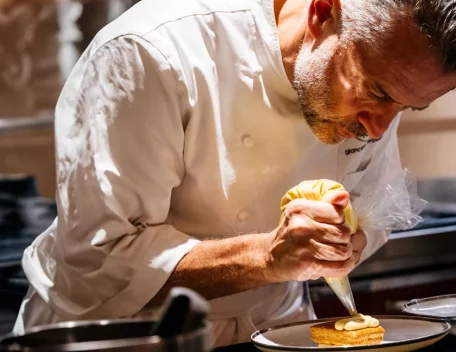Street food in Japan
Sushi and sashimi have conquered the world, but the Japanese table is much richer: a multifaceted cuisine of ancient origin, based on a profound respect for ingredients, seasonality and nature. After all, precisely the need to follow the rhythm of nature has allowed the Japanese to develop conservation techniques that have now become a staple even in Western cuisine, such as brining, dehydration and above all fermentation. The street food sector is equally wide and varied: here are three must-taste specialties, plus some curiosities about the famous bento box, considered another street food in its own way.
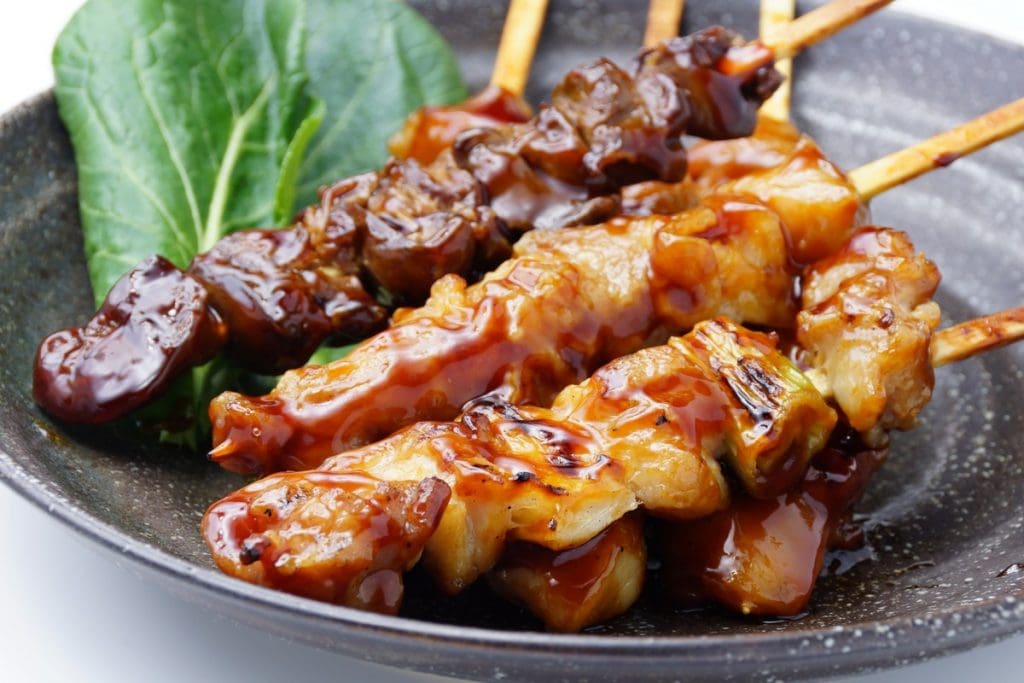
Yakitori, chicken skewers
The consumption of meat has long been banned in Japan. Starting in 675, Emperor Tenmu issued a decree forbidding the eating of meat from April to September, most likely due to the spread of Buddhism from Korea: there is no official ban, but most Buddhists prefer to follow a vegetarian diet to pursue the fundamental concept of compassion. In particular, cows and horses were to be considered forbidden, as well as roosters, a domestic animal necessary to herald the dawn. More allowed, however, are wild game such as duck or pheasant. The first stalls selling yakitori, the famous Japanese skewers covered with teriyaki sauce, appeared around the end of the 19th century and included the use of poultry: the term literally means "roast bird", although pork or beef was often used, because it was less expensive at the time. However, these are delicious kebabs that reached their fame in the 1960s, with the growing diffusion of the broiler, a breed of chicken raised for meat.

Kakigori, the colourful slushy
A mixture of crushed and coloured ice with syrup, served in a paper cone like ice cream: when the temperature starts to rise in Japan there is nothing better than kakigori, a perfect thirst-quenching drink to refresh from the heat. Colourful kakigori is made with very finely crushed ice, so much so that it is soft, impalpable: the thin and transparent flakes of ice are worked with a special blade until they reach a consistency similar to that of snow. The syrups on the surface are a must, from the traditional fruit syrups to the more modern and original variations like matcha tea. A fresh and inviting product which then gave birth to one of the most famous Hawaiian dishes, shaved ice. It was the Japanese immigrants who arrived on the island in the mid-nineteenth century to work in the pineapple and sugar fields, who brought the concept of granita, initially using the pieces of ice left over from the large blocks that were used to cool the work tools.
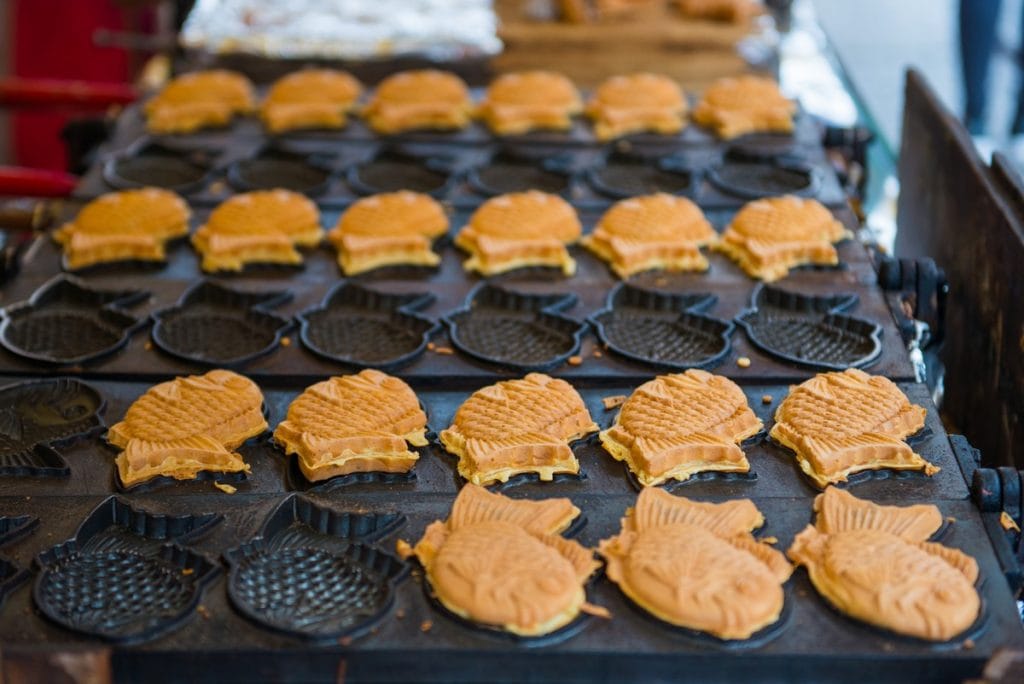
Taiyaki, pastries with azuki bean cream
A sweet snack to be enjoyed at any time, soft and filled with anko, a reddish sweet sauce made from azuki beans and very common in Japanese pastry. The taiyaki dough is similar to waffles, a thick batter cooked in a metal pan with moulds of different models, most often in the shape of a fish, to be filled with anko or creams or chocolate. The ancestors of taiyaki are imagawayaki, rounded snacks prepared with a very thick batter and cooked on an iron plate: they were born in the Kanda district in Tokyo during the Edo period (1603-1868), and immediately became one of the most popular snacks ever, spreading throughout the country. At the beginning of the twentieth century, the owner of an imagawayaki shop, one Sejiro Kanbei, had the intuition to change the shape of the sweet to cope with scarcity of business, thus creating the first taiyaki. He modelled the batter in the shape of a sea bream, but still today nobody knows why: many believe it was a kind way to give an idea of luxury even to less well-off people, considering that sea bream was one of the most popular fish at the time.
How to make taiyaki
The dessert in a new guise and with a thinner batter soon began to take hold in Japan, until arriving in Tokyo, the city that consecrated its success. The press began to advertise taiyaki, which during World War II became an excellent form of business to raise money in a short time. Travelling far and wide across the Japanese country, the snack took on different shapes and flavours, and many regional variations were born. Today it is found almost everywhere, from street vendors to grocery stores that sell it frozen, and it is a must during parties and events. Preparing taiyaki at home, however, is not difficult (you do need to have the right press): the batter is made with flour, yeast, baking soda, milk, sugar and eggs, while for the filling you can indulge yourself with jams and sweet spreads.
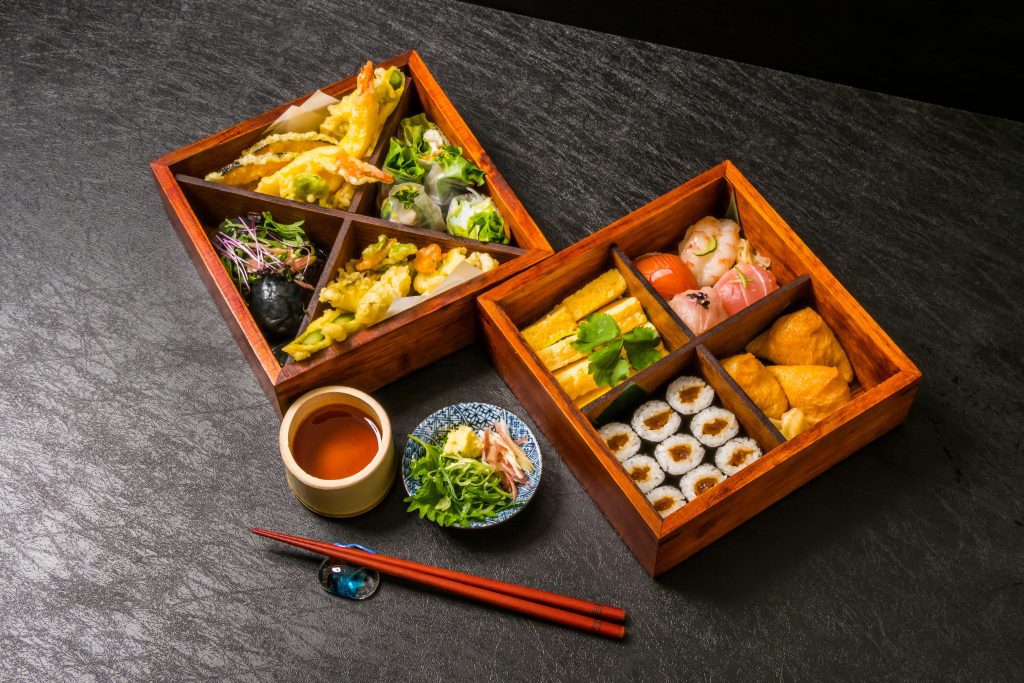
Bentō, the Japanese lunch box
Technically it is not a recipe, but for the Japanese it is a street food in all respects: we are talking about bentō, a lunch box that has long been popular in Europe as well, omnipresent in Japanese stations, actually born as a home lunch in the late Kamakura period (1185 -1333), when people stored boiled and dried rice in a bag. The modern version was born towards the end of the sixteenth century, when it was common practice to use lacquered wooden boxes to carry food, especially during the cherry blossom season, the hanami, or on the occasion of the outdoor tea ceremony. However, the success of bentō was sanctioned by samurai Oda Nobunaga, who chose to distribute simple and practical meals to the guests of the castle. Over time, the lunchbox became an essential accessory during trips out of town, and even more so with the boom of the industrial railway during the Meiji period (1868-1912), which gave way to the diffusion of trays ready at the station called ekiben. In the 1920s, the more hygienic and beautiful aluminium bentōs arrived, finally replaced by those in Alumite, a lighter and more heat-resistant aluminium alloy. A further turning point came after the 1980s with the advent of konbini, small cheap shops that sold a little bit of everything, and above all with the diffusion of the microwave oven which allows food to be heated quickly.
by Michela Becchi

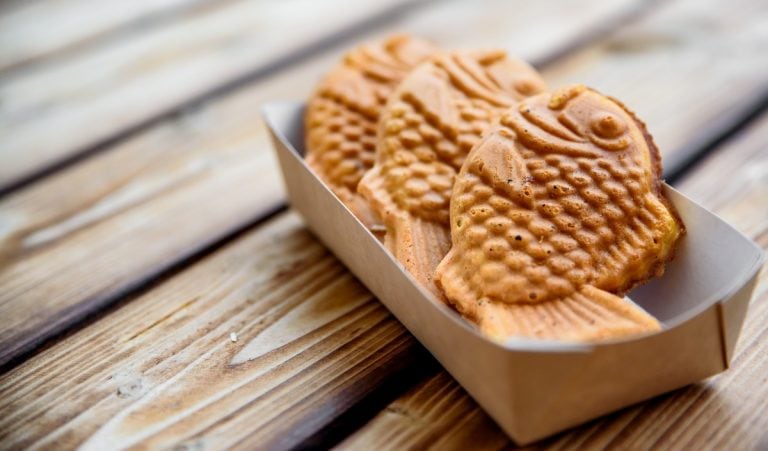
 What changes for the export of Italian wines to China under the new regulations?
What changes for the export of Italian wines to China under the new regulations? “Forget dealcoholised wines. The future is Komb(w)ine.” Moser and Ravizza present a new grape must-based product
“Forget dealcoholised wines. The future is Komb(w)ine.” Moser and Ravizza present a new grape must-based product Global wine consumption at a historic low and vineyards in decline. The OIV report outlines a 2024 to forget
Global wine consumption at a historic low and vineyards in decline. The OIV report outlines a 2024 to forget Oenologist Riccardo Cotarella will also produce dealcoholised wine: "My first bottle will be out in October and it won’t be bad"
Oenologist Riccardo Cotarella will also produce dealcoholised wine: "My first bottle will be out in October and it won’t be bad" Dear natural wine world, enough with the constant polemics. If you don’t want to self-ghettoise, self-criticism is needed
Dear natural wine world, enough with the constant polemics. If you don’t want to self-ghettoise, self-criticism is needed




